Some of the very best Hawaii souvenirs are the photos you take. Who doesn’t love sharing photos of Hawaii. That’s true for visitors and locals alike. We’re kicking this off by sharing some of our tips and we welcome yours as well.
Here are more top 10 suggestions to capture the best Hawaii photos on your vacation.
1. Start early and end late.
Sunset is often one of the best times, starting in the later afternoon. Colors can become richer as the sun approaches the horizon. Having an object in the foreground can add interest.
Don’t miss those great sunrise and early morning shots too. Soft morning light makes for great Hawaii photos.
We think that the hour after sunrise and the hour before sunset are two of the best times to capture great Hawaii photos.
2. Back up your images as you go.
There are so many ways to do that and it might seem obvious. Ideas start with free and basic things like Google Photos.
3. Do online photo research to find what others have been creating.
Two great places to start looking at Hawaii photos are Instagram and Google image search. Get a sense of what time of day might work best at various locations. See what else you can do to put your unique spin on a location.
4. Do like the pros – take a lot of photos.
Don’t just stop at one or two. Shoot five or more images instead, so you have a nice selection to choose from when you get back.
5. The camera that’s in your hand is often the best one.
Therefore, we suggest having a great phone camera. The ones we are using currently are among the latest from Samsung, which have truly exceptional photographic capabilities. We also use a regular camera for the finest photography including significant optical zoom, and multiple lenses.
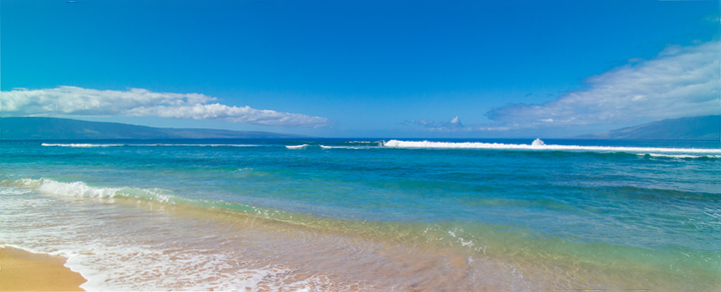

6. Find accommodations with a view.
Here’s a shot taken on Maui from where we stayed. There are many great places to stay in Hawaii that come with a built in 24 hour view.
7. Know your camera ahead of time.
A bit of fine tuning of your skills with phone and camera is essential, before your Hawaii vacation begins. Practice makes perfect. A great camera kept in the closet can easily be forgotten. It takes a bit to familiarize oneself with these clunky user interfaces.
8. Don’t forget underwater photography.
There are so many great Hawaii snorkeling opportunities to capture. An underwater camera of some sort is a must in Hawaii. Check if the battery is charged before going into the ocean, as we have missed some great pictures.
9. Basic photography things to do.
Those include keeping the horizon straight (turn on your camera’s grid). Also, the grid will reveal how your photo lays out in terms of what is called the rule of thirds. Look that up if you’re interested, but basically it helps you create more interesting and balanced photos.
10. Become proficient with a photo editor of your choice.
It makes all the difference in the final presentation. You can quickly make adjustments, increase brightness, enhance colors, and so much more.
Let us know what your favorite picture taking tips are too. If you get really good at it, consider selling some of your best shots on stock photography websites and turn your Hawaii vacation into a money making opportunity.
Get Breaking Hawaii Travel News
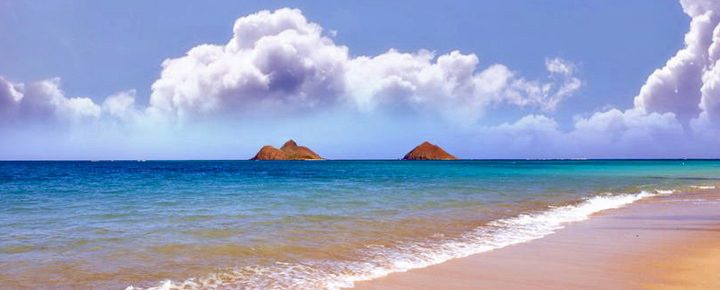
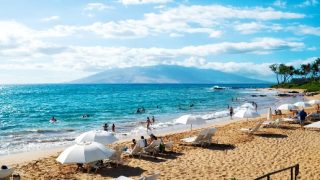
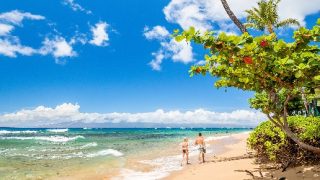
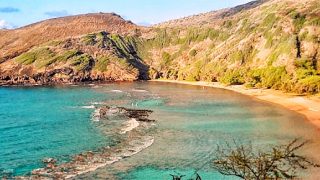
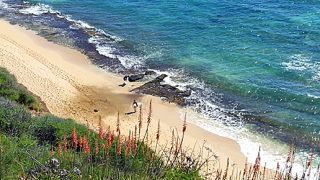

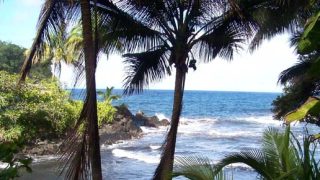
Amazing! I just went to work with your tips and my photos look amazing, I can even take photos with my phone and they look professional and insta ready! I don’t have to worry about lighting or background anymore, your advice is doing the job for me to make photos look amazing.
ROBBOS, YES!!! Your best point was the last one (I’ve made this mistake on a couple trips). Don’t see Hawaii through your viewfinder put that camera down and see it!!
My advice, just take a million pics! Nobody ever said, “Dang! We have too many pictures of Maui”
Aloha!
Pictures taken with your phone are fun and fast to share. Hawaii has a lot of contrasting bright and dark tones of light – just the ocean alone is filled with lots of tones. Then think of a stereotypical beach photo with mountains in the background, or people seated on a restaurant patio – light dark light dark. This can lead your phone camera to underexpose or overexpose your shot, and a memory ruined. To help with that, get an app like “Lightroom” on your phone – as well as editing photos, it can help balance lighting levels and change tone. The app is free, and there are many other similar ones. Each has things it does best, so don’t be surprised if you have a few of them on your phone. Try them out before you go.
If your phone OS allows for storage of photos OFF of your phone in “the cloud” (a tech company’s servers), switch ON that option. This makes it far less likely that photos might be lost as your phone goes through x-ray scanners and metal detectors at the airport.
If you’re buying a phone before your trip, don’t be fooled by number of megapixels as a phone camera selling point. What’s far more important is the photo processor inside and the quality of the lens. Big pictures without a good processor and lens just means your storage will be filled faster with lower quality pictures. Search for phone camera comparisons online, then go try a few out in the store.
A lot of people like bokeh, the effect of a crystal clear subject and a slightly blurred background. Some phones have what they might call “portrait mode” to help with this. If your phone does not, you may be able to achieve something similar by having your subject closer, then touching the subject as shown on your preview screen. This makes the camera focus on your close subject, and can often leave the distant background out of crisp focus range.
Switch on your phone’s “location service” options. In some cases this will assign a place name and date/time stamp to your photos. This can be very helpful when you get home and don’t remember where a favorite shot was taken. For example, this way you will know the name of that beach you liked.
Selfie sticks are helpful even for folks who aren’t taking pictures of themselves, because they allow different angles. Being able to hold your camera higher than the crowd at a popular place is very handy.
Phones are simple and convenient, but if possible bring a DSLR. It will produce higher quality memories, ones that are better to share and use for projects like holiday cards, t-shirts, mugs, screensavers, etc.
On DSLRs, photos are normally stored on an SD card. Make sure that your SD card is fat – you’ll be taking far more photos than you think. Bring a spare SD card too in case yours fills up.
Your pictures will be improved dramatically with two filters: a ND (Neutral Density) one and a polarizing one. These will help even out the highly contrasting light noted above. Plus, they are inexpensive add-ons that help protect your lens.
Having a variety of lenses is great, but switching lenses opens your DSLR to the windy, humid, salty elements. This means a higher chance of spots on your processor, which would then taint ALL photos until your processor gets cleaned. To help avoid this, use just one lens, one that you’ll never have to take off. Ideally go for a telephoto that allows both nice wide angles and allows you to zoom in on distant objects.
DSLRs are great, but how heavy is your gear? Will you be comfortable carrying it for hours? Something to consider before you go. Carry just the essentials – you’ll be grateful for this on a long hike, sunset cruise, etc. Consider a camera strap that allows the camera to be held on your side rather than on your chest.
A camera around your neck, or a camera bag on your shoulder, are just two of the things that immediately identify you as a tourist. To be less conspicuous, try carrying your camera in a small backpack or roomy “buttpack.” Note: although backpacks are very common in other places, small gym bags are more common in Hawaii. You’ll see a beat-up cooler and a handy old gym bag in the bed or back seat of many local pick up trucks, so such items are not obvious camera stashes.
Try a long exposure of moving objects like ocean, crowded streets, or stars. For best results, use a tripod and a cable release or remote control. The sweet spot for long exposures of ocean waves is usually one to two seconds, which allows for both a little motion blur and a little subject definition.
Shoot with as low an ISO as possible. This may require longer exposures; remember to put the camera on a tripod, monopod, or flat surface when using an exposure longer than 1/60 of a second. Brace yourself (and your camera) when shooting in strong breezes.
Sand shifts as waves come and go, and can be an unstable surface for a tripod. Rather than set your tripod ON the sand, it’s helpful to push the legs of your tripod several inches INTO the sand.
Whether you shoot with a phone or a DSLR:
– take LOTS of shots, not just one, of each scene you like. This gives you a nice choice, and allows you to delete shots in which someone is blinking or grimacing, someone else is walking into your scene, or things are out of focus. It also allows for a nice variety of clouds, waves, and birds in the background.
– keep your phone or camera dry. Salt water on your gear can ruin the shots, and even ruin your gear. Keep a lens rag (like the one that came with your glasses) in your pocket, and quickly dry off anything that gets wet.
– remember that a lot of wildlife in Hawaii is protected by law, and it is illegal to be within a certain distance of animals that you’ll love watching. This includes seals and turtles on the beach. The beach is their forever home, not a vacation destination, so give them respect and space. Anyone not so inclined naturally risks fines by local or state government. Wildlife photography is another good reason to use a DSLR rather than a phone; your telephoto will allow you to zoom in and get a much higher quality shot from a distance. This is also true for the amazing birds, which you’d normally not get close to anyway.
– carry a spare battery pack. A spare charging cord is nice, but won’t help you on the beach or in the mountains. Many models of battery packs can be attached to the outside of the phone or camera, so there’s no need to open the unit (and let humid, salty breezes in).
– Can your phone or camera survive being underwater? Some fantastic photo opportunities are available beneath the waves. Remember to THOROUGHLY clean and dry your equipment when you get out of the water.
– Temperature extremes can harm electronics, whether it be the sun on the coast or freezing temperatures on the mountains. Protect your gear. Don’t leave your phone or camera sitting in the sun, laying in a rental car, or exposed for long periods to the cold air on the mountains of some islands.
– Millions, maybe billions, of photos have been taken in Hawaii. A search for Hawaii images online shows a lot of photos that look almost identical (ho hum, another hotel lobby, another sunset over the ocean, another child playing in the sand, another crowded Waikiki beach shot with Diamond Head in the background). How will YOUR shots be different? What will make YOUR shots stand out in the crowd? Consider shooting from different angles, shooting at different times of day, and always having something in the foreground to help give a sense of perspective.
– When picking photo locations (or places to stay) it’s handy to know that most islands are driest on the west side, and lushest on the east side. The waves on most islands are likely to be gentle on the south shore and biggest on the north shore.
– Have you heard photographers mention “golden hour?” This is the first hour after dawn, and the last hour before sunset. The light during these hours is the most warm and gentle, and produces nice long shadows.
– You’ll wake up most mornings to a light rain on eastern shores and in the mountains (“a few windward and mauka showers).” The rising sun usually burns these passing showers off, but be sure to look at them each morning – sun and rain combined produce Hawaii’s famous rainbows. You’ll see rainbows when looking through the rain to the sun in front of you, so for rainbow photographs be sure to look towards the mountains or towards the east each morning.
– This might be obvious, but when taking a shot consider the entire composition, not just your subject. Taking a picture of your companion? Nice, but what’s that in the background? Does your friend appear to have a palm tree or light pole coming out of their head? Hmm, move the camera around and see how the overall composition changes.
– Shooting video? Be prepared for a lot of buffeting wind noise… so use an external mic rather than the one built into your equipment. Make sure your mic has that foamy or feathery wrapping that helps absorb the breeze and speech hisses before they hit the mic.
– Please don’t be “that” tourist – the one shouting at friends and family as they pose, the one trying to move strangers for a better shot, the one loudly commentating a video. Have respect for the experience and comfort of those around you.
– Please do offer to take photos of other people when they try to do arm-stretched selfies. Those shots always look awkward, and people tend to look at their phone’s screen rather than at the camera lens when the shot is taken, so appear to be looking off to the side. “Can I help? Here, give me your phone and I’ll take a shot for you.” Then take four or five shots in case someone blinked.
– Tiki originated in New Zealand and are in Hawaii only because they fit some tourists’ concepts of Polynesia. Pictures of tiki in Hawaii are like pictures of Walmart in Hawaii – the shots can be nice, but don’t accurately represent the place you’re visiting.
– The staff of hotels and restaurants are usually happy to pause for a moment and take a picture of you, but please tip them nicely for doing so. Many people employed by the tourist industry work several jobs, so a little extra cash is really appreciated. If possible, tip with cash rather than adding it to your credit card bill.
– Local people are not photo props. Let’s say this together: LOCAL PEOPLE ARE NOT PHOTO PROPS.
– Some spots in Hawaii are bustling with tourists, and everyone wants to get a good shot. It’s inevitable that your face will appear in photographs and videos taken by other tourists. But you can minimize the possibility of intruding into (and potentially ruining) their shots by being aware of folks around you, and moving out of their shots when you see phones and cameras raised. The more people do this, the better everyone’s photographs look.
– Many, maybe most, locals do not use social media, and you’ll find that many local businesses do not have web sites. Take this as a sign that people in Hawaii don’t have to go online to find paradise! The web site used most frequently by the few that do so is Instagram, part of Facebook’s empire. If you have an account, browse Instagram for photo and location ideas.
– There are photography shops and phone dealers near most tourist destinations. Add their addresses and phone numbers to your contacts in case you have to pick up or replace any vital gear while you’re around.
Two last tips, take them as you like:
– For many people, maybe you, this is a once in a lifetime trip. Pay attention to your photography; this may be your only chance to take these photos, and you’ll value them the rest of your life.
– It’s very east for people who enjoy photography to be all-consumed by light, angles, and compositions. We tend to view everything we see as if we’re looking through a viewfinder. Remember to deliberately put down your camera, and to experience Hawaii now rather than just your pictures of it later.
This article was so unnecessary. If you are not going to give anything other than what everyone with an IG account gets as common sense it’s a waste of everyone’s time to read this.
Just google yourself and you will get info. Skip this one.
This is great. KNOW your camera BEFORE you go! BACKUP as you go. Excellent.
Is the contest still ongoing? I was in Hawaii in July and now have a great many photos of the vacation.
Depending on which island (or islands) you’re visiting, we have always loved the books by Richard Sullivan — DRIVING AND DISCOVERING OAHU and DRIVING AND DISCOVERING MAUI AND MOLOKAI. The books may be getting a little old but the scenic information doesn’t change along with recommendations for the best spots to take pictures. Richard is a professional photographer and if you use these books as guides you won’t miss many photogenic locations along with directions. The books are terrific and Sulllivan lives in the islands. He’s shot photos for all sorts of upscale travel publications as well as major newspapers.